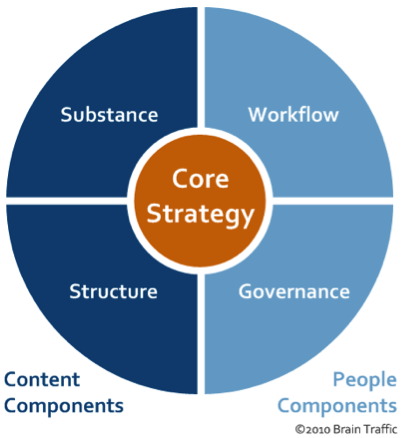Measuring the Success of Your Web Content Method: Vital Metrics to Track
In the world of digital advertising, the efficiency of a material method is frequently determined via numerous metrics that show both reach and influence. While traffic metrics supply a fundamental understanding of target market interaction, it is the combination of involvement and conversion metrics that really exposes the deepness of material resonance and its economic effects.
Web Traffic Metrics
In the world of content method, understanding website traffic metrics is vital for examining the efficiency of electronic initiatives. These metrics offer insights into user behavior, aiding organizations establish the reach and impact of their material. Trick website traffic metrics consist of page views, distinct site visitors, and session period, each offering distinct perspectives on audience involvement.
Web page views suggest the overall variety of times a page has been seen, while special visitors gauge the variety of distinct people accessing the web content, thus eliminating replicate matters. Tracking these two metrics with each other enables a detailed understanding of content usage patterns. In addition, session period discloses just how long users are engaging with the web content, supplying understandings into its importance and engagement level.
Assessing traffic sources is additionally essential; it assists recognize where visitors are coming from, whether natural search, social networks, or recommendations. This info is crucial for refining advertising techniques and enhancing content circulation channels. By concentrating on website traffic metrics, companies can determine the exposure of their content, recognize fads, and make informed choices to improve total content technique performance. In recap, web traffic metrics act as foundational indicators that guide critical modifications and foster continual improvement.
Involvement Metrics
While website traffic metrics offer important insights into individual reach and actions, involvement metrics provide a much deeper understanding of exactly how target markets connect with content once they get here. These metrics are important for assessing the quality of individual interactions and the total performance of a web content strategy.
Scroll depth gauges how much down the web page customers scroll, supplying insights right into material framework and readability. Social shares show the degree of vibration with the target market, highlighting web content that triggers individuals to share with their networks.
In addition, comments and user-generated content can work as signs of target market interest and participation. High interaction levels commonly correlate with raised brand commitment and campaigning for, as users who connect with web content are more likely to bear in mind and endorse the brand.
Conversion Metrics
Exactly how properly does your web content drive preferred activities from your target market? Conversion metrics are crucial for reviewing the performance of your content method in encouraging customers to take specific actions, such as signing up for a newsletter, making a purchase, or downloading a resource. By tracking these metrics, you can determine the return on financial investment (ROI) of your web content efforts and identify locations for enhancement.
Trick conversion metrics consist of conversion price, which determines the percentage of visitors that finish a desired activity, and the average order worth, which indicates the regular amount spent by consumers. Additionally, tracking list building metrics, such as the number of leads obtained with content, can offer insight right into the effectiveness of your web content in nurturing potential customers down the sales funnel.
Another important metric is customer procurement expense (CAC), which assesses the overall expense related to getting a new consumer through your web content efforts. Content Strategy Agency. By assessing these metrics, you can make data-driven decisions to maximize your material approach, improve your messaging, and improve calls-to-action, eventually bring about enhanced conversions and company development
SEO Performance

First, organic traffic offers as a primary sign of search engine optimization success, showing the number of site visitors coming to your website through online search engine outcomes. Assessing natural traffic trends gradually this website can disclose the efficiency of your optimization efforts.
Second, keyword positions are essential as they show exactly how well your material performs for targeted search terms (Content Strategy Agency). Checking variations in rankings can assist you improve your search phrase approach and focus on content renovations
Third, click-through price (CTR) is vital, as it gauges the portion of individuals that click on your link after seeing it in search results page. A high CTR indicates that your titles and meta descriptions are compelling and appropriate to individual questions.
Social Media Effect
What duty does social media sites play in enhancing content strategy metrics? Social media functions as a powerful amplifier for content circulation, significantly affecting brand name, reach, and interaction understanding. By tracking social networks metrics such as shares, likes, comments, and total interaction rates, companies can assess the performance of their web content approach and identify what resonates with their target market.
Additionally, social networks platforms supply important group understandings, enabling business to customize content to details target market sections. Keeping track anonymous of reference traffic from social networks to the site additionally assists in understanding the conversion capacity of social media campaigns. The relationship in between social media sites interactions and website efficiency can disclose the efficiency of web content in driving user behavior.

Conclusion
In final thought, gauging the success of a content technique requires an extensive analysis of numerous metrics. Web traffic metrics reveal the reach of material, while interaction metrics offer insights into target market interaction.
While traffic metrics give a fundamental understanding of target market involvement, it is the combination of involvement and conversion metrics that genuinely discloses the deepness of web content vibration and its financial implications. By focusing on website traffic metrics, companies can determine the presence of their web content, recognize fads, and make notified decisions to improve general content technique effectiveness. By tracking social media metrics such as click reference shares, likes, remarks, and total involvement prices, organizations can evaluate the efficiency of their material approach and determine what resonates with their audience.
In summary, leveraging social media impact metrics not only boosts the understanding of material performance but also educates future material creation, guaranteeing alignment with target market choices and optimizing general technique performance.

Comments on “Content Strategy Agency Insights: Boosting ROI for Your Campaigns”